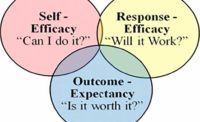Shape
Behavioral shaping procedures developed by behavior analysts offer guidelines for increasing safe behaviors and decreasing unsafe work practices. Here's how the procedure works: target the behavior you want, observe carefully for successive approximations to the target, and use positive consequences to reward improvement. My earlier ISHN articles on designing effective incentive/reward programs (November, 1992) and on giving and receiving recognition (December, 1996, and January, 1997) offer guidelines for delivering positive consequences in a shaping process. The key to shaping is to give a positive consequence for closer and closer approximations to the target behavior. You can't shape by waiting for perfection. Instead, you observe closely for improvement and support it with reward or recognition procedures.Sell
How we talk about a safety improvement process influences how we and others feel about the process. In other words, we need to sell the process to ourselves and others. Selling includes talking about a behavior-change technique or process in ways that sound good. The scholarship of many behavioral scientists, including B. F. Skinner himself, was not written for public acceptance and consumption. As a result, many people have been turned off to the principles and procedures of behavior analysis because of the language used to discuss them. Words like behavior modification, brainwashing, and rat psychology have been used to describe behavior-based approaches to solving problems, including the human dynamics of safety. As a result, many people view behavior-based safety as restrictive, controlling, and even dehumanizing instead of the liberating and dignity-producing approach it actually is. But if we want people to appreciate and accept something, we need to talk about it with the kind of language that does it justice. Proper marketing of behavior-based safety is needed to get the intervention process started with necessary participation and support. After implementation, the observable benefits of this approach will do the selling naturally. Behavioral scientists who possess the profound knowledge for improving safety-related behaviors and attitudes need to understand marketing as well. They should take a page from the pop psychologists and narrow the gap between science and application by selling the most cost-effective approaches.Study
We need to do our homework before implementing a process, and we must systematically observe the impact of the process throughout its implementation. This is the essence of study behavior, the third key to safety success. Key components of studying are summed up in the safety observation process my colleagues at Safety Performance Solutions and I teach. We call this process "DO IT": ·- Define one or more target behaviors to monitor for possible improvement; ·
- Observe target behavior(s); ·
- Intervene to improve the target; and ·
- Evaluate your observations before, during, and after the intervention to determine the impact of your attempts to improve the target behaviors(s).
The DO IT process relies on naturalistic observation to study and improve performance. It's impossible to set realistic but challenging goals without first observing current performance levels, and it's impossible to improve an intervention process unless performance is observed before and after attempts to improve it. When people use the DO IT process they are actually applying the scientific method and adding to their profound knowledge. This depends, of course, on an objective and reliable observation process. We cannot rely on direct observation for all of our study behavior. Fortunately, we can learn a lot by listening to experts relate their observations. But we need to be leery about advice based only on common sense or on information gleaned from the popular press. I recommend asking the expert to reference the research on which they base their theory, conclusion, or recommendation. Listening carefully to people's opinions, feelings, and concerns can help immensely at improving morale and solving human factors problems. Unfortunately, there are often barriers in place that stifle people from offering safety suggestions. Sometimes the people who can use a suggestion are not ready to listen. Obviously, you need to study your workplace (especially through careful observation and listening) in order to find and remove these barriers.
Finally, the evaluation process that is part of studying is obviously vulnerable to several sources of bias. We judge, for example, which reading material is most pertinent; what observations are most relevant, reliable, and valid; and who or what is worth listening to. Overcoming these sources of bias is not easy, but remaining aware of potential subjectivity and prejudice during our study behavior can help. And the more comprehensive our study (through reading, observing, and listening), the more likely an evaluation of the information will help us make the right decision.



